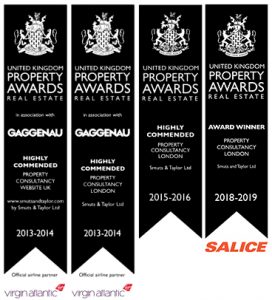According to the latest research from Lloyds Bank, house prices in London have recovered with a 59% increase from 2009 – rising from an average of £362,641 to £578,381 in 2016, compared to a growth of 31% for England and Wales.
Key Findings
- The Lloyds data revealed that house prices in the City of London have doubled (100% increase) since 2009 to £908,759.
- Second was borough of Waltham Forest which also had a significant increase of 97% to £433,105.
- In the last two years, the largest growth areas are from London’s outer boroughs with an average growth of 19%, compared to 4% for prime boroughs and 12% for inner boroughs.
- Nine out of the top 10 growth areas over this same period are within Outer boroughs with an increase in house prices between 25% and 32%.
- Newham and Barking & Dagenham, the two boroughs most impacted by the downturn, are now the areas which have seen the biggest increase in house prices in the last two years. Helped in part by the regeneration of this area as a result of the London 2012 Olympic Games, Newham has seen average house prices increase from £269,529 in 2014 to £356,638 in 2016, a rise of 32%, with Barking and Dagenham also reporting a rise of 32% to £285,129.
Andy Mason, mortgage director at Lloyds Bank, commented: “The financial crisis saw average house prices in London generally remain stable during 2007 and 2009. Following the crisis, the growth in average prices in prime boroughs outpaced other areas in London by nearly double to create its own distinct market.
More recently, our analysis is showing house price growth in Outer London boroughs is increasing at a greater pace than Inner London boroughs. Average house prices in the most expensive areas are starting to flatten, whereas London’s most affordable areas are showing healthy growth. A possible explanation for this is the ongoing legacy from the 2012 Olympic Games and that outer borough areas like Newham will benefit from the Crossrail link to the City due for completion at the end of 2019.”

